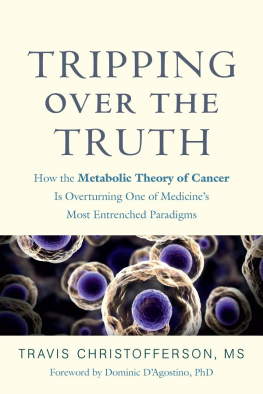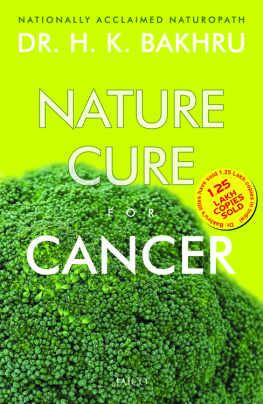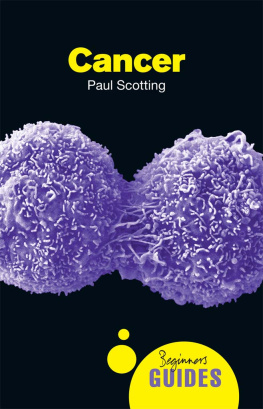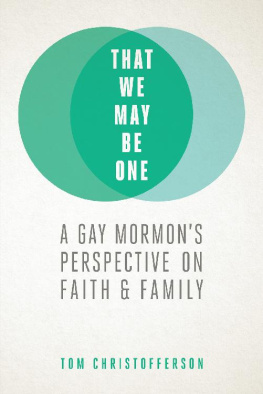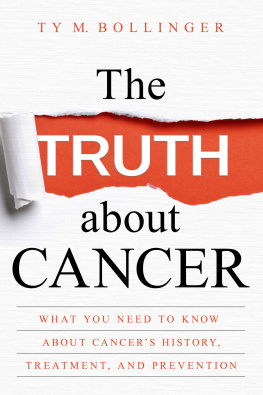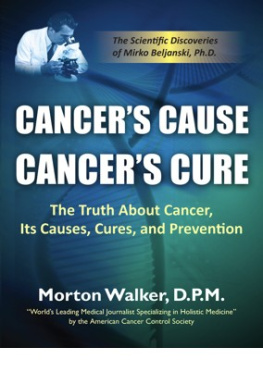Tripping
Over the
Truth

The Return of the Metabolic
Theory of Cancer Illuminates a
New and Hopeful Path to a Cure
Travis Christofferson
Copyright 2014 Travis Christofferson
All rights reserved.
ISBN: 1500600318
ISBN 13: 9781500600310
Library of Congress Control Number: 2014913140
CreateSpace Independent Publishing Platform
North Charleston, South Carolina
Contents

Acknowledgments

Tom Seyfried, Pete Pedersen, Young Ko, and Dominic DAgostino thank you for your extraordinarily generous spirits and for your grit, creative-vision, passion and tenacity. My wife, when I asked her to read the book, she said, I dont have to, I lived the book. Thank you for living the book with me darling. My shining-star kids, for just being the people you are. That an intrinsic biological program caused atoms from disparate parts of the planet to come together, and sculpt little people capable of wonder, reason, and delightful humor through such little effort on my part still befuddles me. My editor, Betty Kelly Sargent, for so adroitly and gently sanding away the rough edges. To my beautiful nieces, my sister-in-law, and Henry, my hilarious nephew. My Parents, I love you. My buddy Joe Pfeiffer for always meeting me at the Independent Ale House after a long day of writing and patiently listening to me babble over a pint.
Both science and non-fiction story telling intrinsically rely on the work of others. Its a building that is continually under construction with scientists knocking out walls, adding rooms, pouring new foundations; while science writers go in and redecorate from time to time. To the builders: Tom Seyfrieds Cancer as a Metabolic Disease, Pete Pedersens lifetime of research, Young Kos tireless efforts, Bert Vogelstein and Charles Swantons outstanding work, writing, and generosity of time. And to the decorators: Siddhartha Mukherjee for his masterpiece The Emperor of All Maladies. More than any other you have established the words that capture the disease of cancer. Robert Bazell for his wonderful book HER-2. And Clifton Leaf for both his incredibly insightful book The Truth in Small Doses, and for the advice and kind encouragement. You are nothing but class. All of their works I borrowed from heavily. It felt silly re-telling the stories they had already told, especially so considering they were told better than I could ever tell them, but I had to for the natural progression of the book. Thanks to Ilona McClintick for your indispensable advice, and George Yu for believing in me. Thank you Harrie Verhoeven for allowing me to tell the story of Yvars courageous fight with cancer. I hope, in the end, it helps to save the lives of others. Everybody at Greens, I love you guys. Thanks to Ed and Lisa Engler, Gay Whalin, and Alisha Butterfield for proofing sections.
Special thanks to Robb Wolf for kicking this whole thing off.
And last, to Brady Christofferson, for being a business partner, an editor, a psychologist, a friend, and a brother.
Dedicated to Blu
The truth of a theory can never be proven; for one never knows if future experience will contradict its conclusions.
-Albert Einstein, 1919
In the Beginning

Few words are as emotionally charged as the word cancer. For cancer biologists it is a riddle yet to be solved; a cruel killer and a masterful escape artist. To those it has yet to affect, it is an abstraction, something terrifying but distant. Many have intimate stories attached to the word. Some are stories of triumph, but many are of a struggle with a foe that proves too relentless, too savvy, and too hard to pin down. Still today, perhaps the most terrifying quality of cancer is profound helplessness. We all know that if cancer wants to win, it most likely will.
Human history is a story of conquest over the natural worldour triumph over the procuring of food, water, and shelter and combating disease. We figure out ways to not be helpless. Just recently we have gotten very good at it. When we lived in caves and throughout the Bronze and Iron Ages, humans could expect to live into their twenties. The Romans were only able to boost life expectancy to the late twenties. By the early twentieth century, the average life span was up to thirty-one, but between then and now, in only about one hundred years, the average global life expectancy has more than doubled. Today an adult male, born in the West, can expect to live to be about seventy-six and a female to eighty-one. The global average is sixty-seven.
Infectious disease alone conspired to keep life-expectancy abysmally low throughout the majority of our past. When Louis Pasteur showed the world that there were invisible, alien-like microbial life forms lurking all around us and thriving in the inner city filth created by the industrial revolution, it was largely a matter of simply cleaning up. After that came vaccines, and on the heels of vaccines came the miracle of antibiotics, substances that do deeds transcending all medical preconceptions, as Nobel laureate Peyton Rous so elegantly put it. One by one, we were beating back the forces that prevented us from living out our natural life span.
Our drive to live unencumbered by the shackles of nature is so relentless that even our natural life span is now on the table. Scientist Leonard Hayflick described aging as an artifact of civilization, opening the door to the possibility that aging is not the inevitable process it was always thought to be. It might be malleable, delayed, or switched off entirely. This enticing possibility has put aging in the cross hairs of an imaginative new sect of molecular biologists who see no limit to what can be achieved. Mankinds unique desire to live forever, to discover a fountain of youth, is now said to be within reach. It is only a matter of time. Ethical and moral issues aside, there is nothing mystical about this. It is just an engineering project like going to the moon. It really is just a matter of time. Stem cells, those wondrous propagators of youth, will be manipulated into forming tissues or even entire organs, replacing our parts as they wear out. Genes will be tweaked, turned on, and turned off, unfolding an intrinsic program of eternal youth. Even Google is in on the dream. Recently they announced a venture called California Life Company (CALICO), and its stated goal is to employ the power of supercomputing to fight aging and solve death.
The uncomfortable truth of cancer threatens our exalted march toward immortality. Cancer stands alone as our most ardent, confusing, shapeshifting, and devastating enemy. The numbers dont lie. This year, almost six hundred thousand Americans will die from cancer. One in two men and one in three women will be diagnosed in their lifetimes. Despite embellished announcements from government actuaries, the real death rates from cancer are the same today as they were in the 1950s. We cant seem to penetrate its elusive armor, and its not for lack of trying. Cancer receives more funding from the National Institutes of Health (NIH) than any other disease. Not to mention that it is under investigation at every major pharmaceutical company around the world.
Next page

